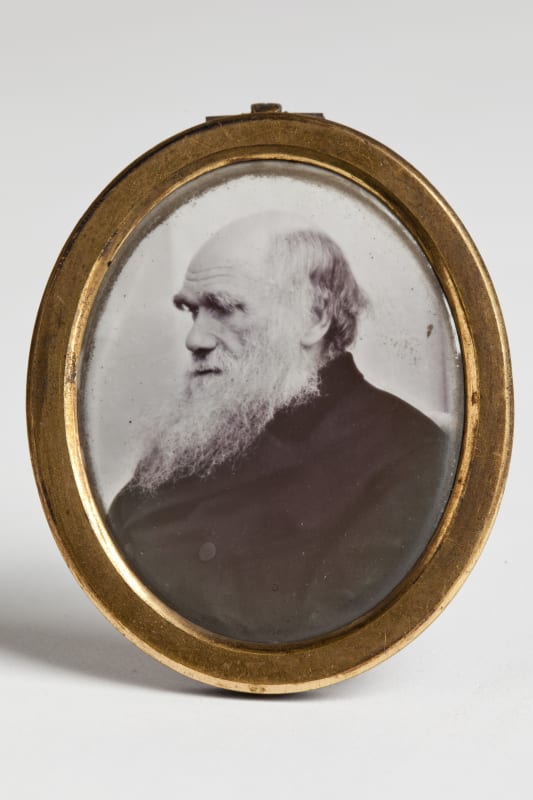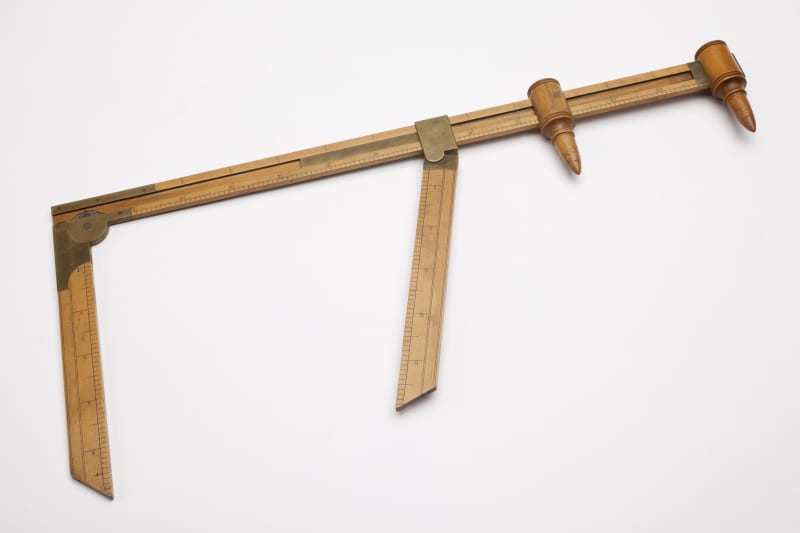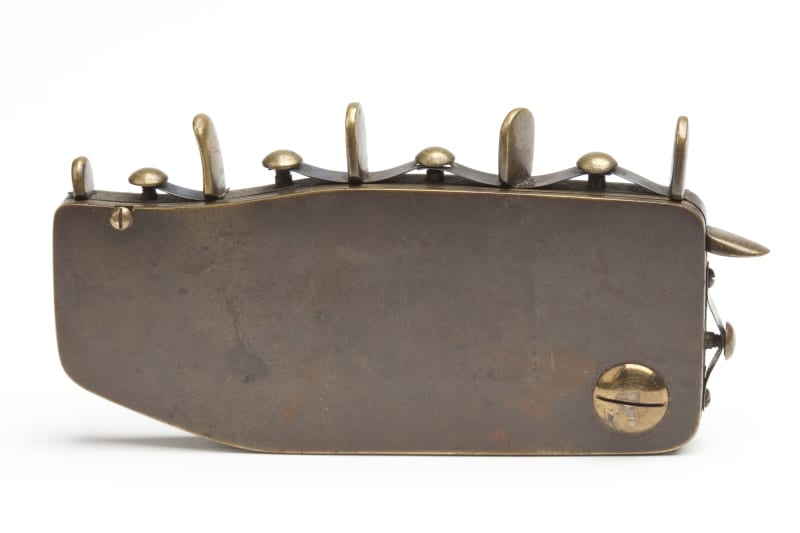The Unbelievable Truth about Sir Francis Galton
By Subhadra Das, on 5 November 2015
I have a motto: If at a loss, take inspiration from a tried and tested Radio 4 format.
This week it’s The Unbelievable Truth, the panel show built on truth and lies. Each panellist presents a short lecture on a chosen subject and scores points for how many truths they can smuggle past the other players. Panellists win points for spotting truths, and lose points if they mistake a lie for a truth. Seeing as I’m the only one presenting, the lecture is longer than normal and contains 15 truths rather than the usual 5. In the interest of investing in a civilised society, I will be trusting you to keep your own score.
This week, my subject is Sir Francis Galton, the Victorian scientist and statistician who propounded the term eugenics.
Francis Galton was born on February 16th 1822 at Sparkbrook, near Birmingham, the ninth child and first son of Samuel Tertius and Violetta Galton. He was the grandson of the renowned doctor and scientist Erasmus Darwin and, as such, a first cousin of Charles Darwin.
Galton was an intelligent child and made all the more precocious under the tutelage of his sister Adele, who was frequently confined to her bed due to curvature of the spine. Galton could read by two and a half, write his name by 3, recite lengthy passages from Shakespeare by 5 and discuss the epic poetry of Homer by 6.
Galton’s father was keen for him to study medicine, but Galton struggled with the subject and changed to mathematics on the advice of his cousin Charles Darwin. He planned to return to studying medicine having gained a degree the maths degree, but gave up formal education altogether after his father died when Galton was 22. He inherited an enormous fortune and never needed to work to earn a living.
Galton was an enthusiastic traveller and, voyaging solo, saw much more of the world than his contemporaries.
While still at university he travelled from Germany through Eastern Europe to Constantinople with many adventures along the way, including spending a whole night bailing out a sinking raft while travelling down the Danube and swimming naked across the harbour in Trieste in order to avoid the hassle of quarantine procedures. In a rare feat for a European at the time, he also visited Sudan, including making an equally rare overland journey to Khartoum.
Having spent his twenties gallivanting around the world and generally living it up, Galton decided that he should be making a more meaningful contribution to society. Building on his love of travel, he carried out a surveying expedition in south east Africa. He taught himself how to use surveying equipment one the voyage to South Africa. During his time surveying the landscape of Damaraland (modern day Namibia) Galton was forced to deal with the local political issues of uprising and rebellion. Once, in order to make an impression on Jonker Afrikaaner, the rebel leader, Galton rode his ox (which are better suited pack animals in that environment than horses) who was named Ceylon, at full speed straight into Jonker’s hut where Ceylon stared the chief down, nostrils steaming and Galton read him the riot act.
Galton does not seem to have shown much interest in the local east African people, but one in particular — a traditionally built, large buttocked Damara woman — did catch his eye. His primary desire, he tells us, was to measure her. Unwilling to cause (direct) offence, Galton reached for his sextant, took readings of the woman as she stood at a distance under a tree, and used equations and algorithms to calculate the final measurements.
Despite his relatively unusual experience living and working in Africa with and amongst Africans, Galton’s racist biases were cemented further by his time there.
On his return to London three years after having set out, Galton was awarded a medal for his work by the Royal Geographical Society. He wrote a book entitled ‘The Art of Travel’ describing his journey and outlining advice for would-be explorers, including fire making, sun signalling, and three ways to cross a river using a horse. It was an extremely popular work which make him a household name, and it was last reprinted in 2001.
Galton married Louisa Butler in 1853 and the couple eventually set up home in a large townhouse at 42 Rutland Gate in South Kensington. They were married for 45 years and never had children.
Following his marriage Galton’s work focussed on building ties with the Royal Geographical Society and innovative research that would be useful for fellow travellers and explorers. One substantial area of interest was weather. Galton was the first person to translate weather data into a graphic format, thus creating the first ever weather map. Using techniques familiar to modern day meteorologists, he compared large areas of similar temperature and barometric pressure and in doing so discovered the anticyclone — a phenomenon of air movement which no one had observed before.
When Charles Darwin published ‘On the Origin of Species’ in 1859, it set the course for the rest of Galton’s career. Galton believed that Darwin’s theory of evolution by natural selection could be the basis of a system of social selection whereby those individuals deemed to be the fittest in social terms (health, athleticism, intelligence and beauty) should be encouraged to reproduce
Having been a child prodigy, Galton had always been interested in intelligence and how this and other behavioural and character traits are transmitted from parents to their children. He was the first person to attempt to systematically measure intelligence and, attempting to do this statistically, he invented questionnaires, twin studies, the lexical approach, psychometrics (the science of measuring mental faculties), and differential psychology. Galton was also hugely influential in the fields of statistics and mathematical biology having established the principles of correlation and regression to the mean.
Galton also often undertook more quirky areas of study. Following three months experimenting, he held that he had determined the mathematical formula for the perfect cup of tea. It was one of many niche research papers published by Galton, including ‘Cutting a round cake on scientific principles’, ‘Three Generations of Lunatic Cats’, and ‘Statistical Inquiries into the Efficacy of Prayer’. In another famous experiment he filled his house with rabbits in an experiment which eventually proved Darwin wrong.
Galton was also interested in how character, intelligence, aptitude and behaviour are manifest in physical appearance. To investigate this he established the Anthropometric Laboratory, first at the International Health Exhibition in 1884 and, after a year, more permanently at the South Kensington Museum. During that first year, nearly 10,000 people came to be measured. This number was built on to such an extent in the following years that it wasn’t until the 1960s that there were computers capable of dealing with the sheer volume of data collected. Along with physical appearance, the Lab also measured ability, such as vision and hearing. While developing a range of devices to test hearing ability and pitch, Galton invented the dog whistle, which he tested by walking around London Zoo and whistling at the lions. Another unexpected by-product of Galton’s anthropometric work was that he was able to demonstrate statistically that the chances of two people having the same fingerprints is 1 in 64 billion.
Galton felt the success of the Anthropometric Laboratory demonstrated its value as a scientific endeavour. As such, it should have the backing of an established academic institution, and in 1904 he wrote to the Provost of UCL to ask for his support. The idea was approved and the “Galton Laboratory for National Eugenics” was established at UCL in 1907. On his death in 1911, Galton bequeathed his personal effects and archive to UCL, along with the residue of his fortune to fund UCL’s Galton Professor of Eugenics.
That’s it! Scroll down to sort the wheat from the chaff, the fact from the fiction.








So, here’s the thing: it’s all true. Some of it is very sad, and I’ve used some ambiguous language in places for effect, but it’s all true.
I decided on this approach for two reasons:
- It was easier. I’ve said before how difficult I’ve found it researching Galton, so I thought I’d save myself the grief of researching the whole of 19th Century scientific thought around him. Writing this article has significantly increased my respect for the researchers on the radio show (I am available to deliver an abridged version of this lecture on Radio 4 by request).
- I wanted to share with you my experience of learning about Galton’s life and work and how bat guano crazy it turns out to be at times. He may be utterly repellent as a human being (or is he?), but you’ve got to give him points for being interesting. So much of what he did now seems implausible, but to me what is particularly hard to swallow is how influential he was and yet obscure he has turned out to be.
So, when it comes to Victorian scientists, it turns out truth is stranger than fiction. I’ll be writing about these and other aspects of Galton’s life and work in upcoming blogs. If there is anything in the text above that really caught your attention, or better still, got your goat, do add it as a comment below and I’ll add it to the list.
Subhadra Das is Curator of the UCL Galton and Pathology Collections, and is one of a team working across UCL Teaching & Research Collections.
 Close
Close


